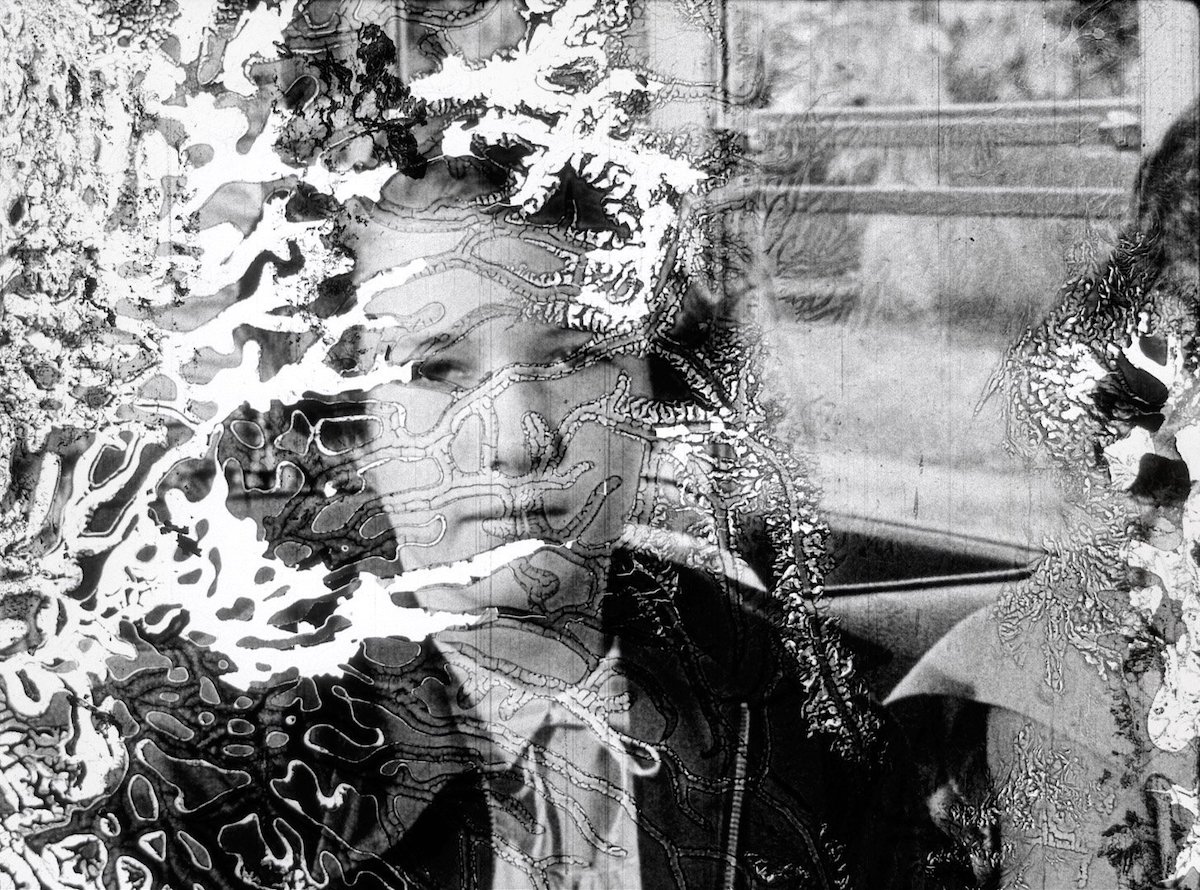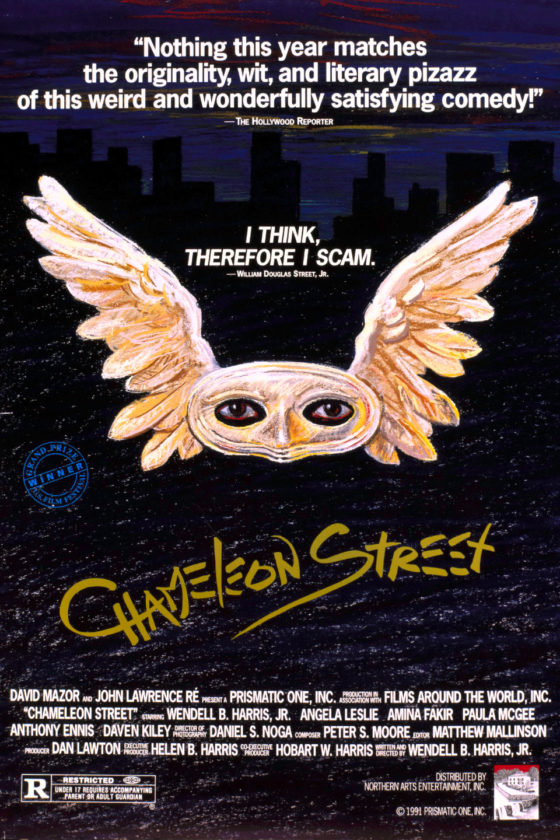This week at Portland State’s 5th Avenue Cinema—Portland’s only student-run theater—our film curators have chosen to screen an experimental film titled Decasia.
The 2002 movie is a combination of old reels of film, and the entire film is silent aside from its original score. The director, Bill Morrison, found and selected old decaying portions of film that add up to a one-hour experience. Decades of decay can be seen, even in the digital version of the movie. Morrison did not accelerate the natural decomposition of the film prints, leaving an eerie reflection on mortality before the viewer. A part of the footage was copied from the University of South Carolina’s Moving Image Research Collections, and another portion at the Library of Congress, which now houses the film. Additionally, Decasia was the first film from the 21st century chosen for preservation by the National Film Registry in 2013.
Cadie Godula, one of the five curators at 5th Avenue Cinema, was the one who chose this film. “We don’t show a lot of experimental stuff,” Godula said. “We show weird stuff, but not unconventional narrative stuff because this isn’t a narrative.” You can see a lot of intriguing and strange films at 5th Avenue Cinema, but rarely a film like this.
Only three weeks earlier, you could have caught a similar film—The Adventures of Prince Achmed. The difference is that The Adventures of Prince Achmed had a narrative but no sound, while Decasia has a score but no narrative.
“You could probably argue there’s some sort of rhyme or reason to why everything is connected, but there’s also a score to the film,” Godula said. “The score fits with the content of the visual and makes it feel like one thing.” Of course, it’s not uncommon for music to help carry the viewer through the film, but the music of this film basically holds all the nonsequitur silent scenes together. “It’s a beautiful score—it’s like an hour long, and there’s no dialogue, which sounds a little intimidating because we don’t play a lot of that kind of stuff here, but it’s a very meditative film.”
However, there are moments where the distortion can be a bit disturbing. “It gets creepy because the visuals with the score play off each other so well, and there’s human faces that will just appear and distort,” Godula said. “It makes you feel uneasy. At a certain point when you’re watching it, you kind of realize, ‘wow, everything is going to die eventually.’”
The film provokes this thought through its presentation of the decayed film. Godula said that film is something people assume will be around forever. “In some ways, that’s true because there’s so much physical film out there, but there’s also a lot of film that is just gone because of chemical erosion,” she explained. “It’s a weird meditation on the transient nature of film and arts.”
Although the film was put together and published in 2002, all its content is from decades earlier. “It’s a compilation of decaying nitrate film from the 1950s, so it’s technically an older movie, but it was made in 2002,” Godula said.
She explained that nitrate film is extremely flammable. “That’s what they were making prior to the 1950s, and they realized it was way too dangerous because things were exploding,” she said. “It creates its own oxygen, so you can’t just put it out. It also decays a lot faster than what we have now, which is polyester, and what came after it, which is acetate.”
The decay of the film is what gives Decasia its character. “The film itself looks like it’s melted, and you can’t technically project it because it’s all fucked up, but how they made this film is they scanned everything with an optical scanner that gave it this really strange warpy effect,” Godula said. “Even the digital version has some distortion because it’s all fucked up.”
She said that many archives in museums still have these old nitrate films, but many of them are not kept in the right conditions, so they start to decompose. “The actual plastic and chemicals start to decay and warp the plastic, so you can’t play them anymore, but it looks super cool,” she explained.
Godula said that she learned of the director through this film, and this is his most well-known work. “From what I know about him, he’s part filmmaker, part archivist-person-artist, and he focuses mainly on working with physical film and doing a lot of found footage film, which is technically what this would be,” she said. She went on to explain that Morrison is not very well-known among people outside the arthouse community. “As I started getting more into physical films, like celluloid, I was like, wow, this is actually really cool because it’s so focused on the formal elements of film as an object and not what the pictures are, if that makes sense,” Godula said. “It’s focusing on the chemicals and the distortion of the film when the chemicals start to erode, and I just found that very beautiful and enticing because it’s very unique.”
Experimental films such as Decasia are hard to compare, but Godula found similarities to Man With A Movie Camera. “It’s a very early film of a guy walking around with a camera filming shit,” Godula said. “That’s it. He’s just walking around.” The 1929 film featured complex and innovative shots of Russia. “There’s some kind of narrative thread, but it’s mostly showing like, ‘wow, this camera’s cool because it’s the ‘20s, and everyone’s like ‘this is insane,’” Godula said. She thought that Decasia is sort of like Man With A Movie Camera and Blair Witch Project combined due to its found footage structure and visual eeriness.
“One scene that had me like, ‘holy shit, this is crazy,’ was a bunch of school children walking across the camera, and there’s nuns on either end of the line of kids,” Godula said, noting how insignificant it sounds. “But it’s about how the film has been deteriorating. I think the silver iodide crystals—the thing in black and white films to give its ‘color’ essentially—I don’t know what the hell happens, but the blacks and whites switch, and it flips back and forth like that, inverting itself, and it’s really trippy to watch because you’re trying to figure out what it is.”
“This film is for people who are more patient with experimental film because there’s no dialogue, and it’s like an hour long of these warpy pictures,” Godula said. Decasia can be watched with your brain off because the visuals alone are enticing, but you may also find that the film provokes you to go down a rabbit hole of thought. But Godula warns, “I think if you like narrative films a lot, if you love dialogue and you’re like ‘I want to see character development,’ don’t see this maybe—you might be disappointed. But also, expand your palette, dawg. It’s good to sometimes see movies that you might think you’ll hate, just to see—just to make sure!”
“We try to be mindful in our programming, to offer a variety of films for people to watch and to learn more about and to be more exposed to different things that sometimes you can’t find streaming,” Godula said. “Streaming is not everything. They don’t have it all—make your own choices about the movies you see and go to a movie theater.”
Catch a showing of Decasia only this weekend at 5th Avenue Cinema on Friday or Saturday at 7 p.m. and 9:30 p.m., or watch the Sunday screening at 3 p.m.






